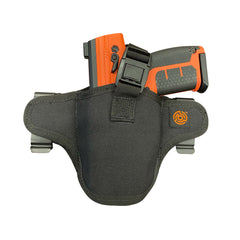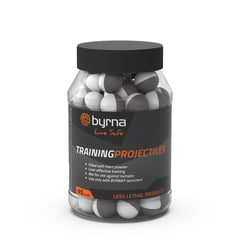
Urban survival shows up when you least expect it. That late-night subway ride with the lights flickering or the sudden rush of a crowd during a tense second pushes you to respond fast while staying within the law. The right defense gear helps you feel prepared instead of feeling exposed. But you need to know your city's laws. Think about how some people on your commute sometimes quietly size up everyone around them. Pretty unsettling when you see it!
You usually need to carry the right tools for an urban setting, which requires a combination of following the laws and picking items that are helpful.
You want to have gear that works with more than one job but doesn't draw any unwanted attention. You should know about the dangers along your path or in your neighborhood. The smartest defense setup feels easy to carry - you won't end up leaving it behind just because it's an issue.
Even the sharpest eye for problems won't help if you're holding onto something that can get you in legal hot water right where you live. We've all been there - weighing convenience against consequences!
Table of Contents
Local Laws And Legal Limits
When you carry some defense gear in the city, it matters for your safety - but local laws can catch you off guard if you're not careful!
Laws change from city to city, and something that's completely allowed in your neighborhood could get you into trouble just a short drive away. Also, be sure to read up on state laws and local city ordinances before bringing any defensive tools with you.
If you're thinking about carrying a firearm, then you'll see that these laws get even harder. Some states make it easy to carry without a permit. But others set up hurdles that are nearly impossible to clear. Bigger cities have stricter gun laws than the rural parts of the same state. At government buildings or schools, you can expect weapons to be banned outright. Be careful, though, because you could end up with charges if you break these rules.

It might surprise you to know this - but even less-lethal options come with lots of their own restrictions. Pepper spray can be illegal or limited to a very small size, depending on where you are. Stun guns need a permit or are banned altogether. Even carrying something as easy as a tactical flashlight could get you into trouble if a police officer decides to ask you questions.
Knife laws can get very confusing fast. That's also the case in urban locations - each area sets its own rules for blade lengths, and automatic knives often aren't allowed at all. How you're carrying your knife matters, too - if it's out in the open or tucked away, the legal consequences can change. There are even some cities where blade shapes or the way a knife folds can get you into trouble.
Once, I watched my friend get stopped at a courthouse security checkpoint because he'd forgotten that he had a small pocket knife in his pocket. Security took it, and my friend was lucky he didn't get charged with anything. That taught me to double-check what's in my pockets or bag before heading anywhere that may have heightened security.
These laws change over time, so what was acceptable last year could be a problem now. Social media has lots of stories about people who found out the hard way. Some were hit with big fines or had some time in jail because of honest mistakes with the gear they carried.
The Daily Urban Risk Landscape
The types of urban threats that you might have depend on where you live and what your schedule looks like. Downtown areas face different crime patterns than the suburbs. When natural disasters hit, some neighborhoods get hit harder than others because of their location or the condition of their roads and buildings. Whether you drive, take public transit, or walk everywhere, your dangers can look pretty different from your neighbors'.
When you have some data, planning feels easier instead of just relying on what you hear on the news. You can check your local police department website or download a neighborhood app to pull up crime heat maps. These give you a clearer view of what happens in your area. Emergency management agencies also share danger assessments so you can see what kind of natural disasters might affect you.

You can see why this matters when something unexpected happens. It's shocking how fast things can change. Just to give you an example, a rideshare driver in Phoenix ended up trapped by fast-rising water after a sudden monsoon storm. He had no alert system on hand and no emergency supplies, so he had to wait for help. Stories like his show how standard days can turn dangerous if you haven't planned ahead.
Try to list out your own dangers based on what's likely to happen and what would affect you. If you work nights in neighborhoods, you might want to focus on staying safe from violent crime. If you spend hours commuting by train, transit disruptions might matter more to you. If you live in a flood zone or an area known for earthquakes, it means you'll put natural disasters at the top of your list.
Where you spend your days shapes which threats you'll have to work with. Been there myself! If you live in a busy area, it brings different challenges compared to quiet neighborhoods. Older buildings might create extra complications when there's an emergency just because they're more likely to break down. Even the number of people moving in or out of your neighborhood can change what you have to watch out for over time.
The types of threats that cities face are changing as new patterns pop up. The weather is wilder and harder to predict in towns. Technology failures can get in the way of everything from electricity to phone service right at the worst possible time. It helps you get ready when you see how these dangers fit together without letting fear run the show.
Discretion And Everyday Carry Comfort
With urban defense gear, you'll see that the "gray man" strategy works best for you - that means that you need to choose gear that doesn't shout "tactical" in a crowd. You want to blend in instead of catching side glances everywhere you go - quite the opposite of standing out! Always think about how your gear pairs with your usual outfits and day-to-day activities, though.
One time, I helped a client with this. He decided to wear a tactical belt under his business slacks during a big meeting. You could see the outline, and his coworkers kept glancing at his waist. The situation became awkward fast - it could have been avoided if he had picked smaller gear.
There's a massive difference between the gear that works and the options that stay under the radar. You might think that hiding a large plate carrier under a hoodie is great. But it changes how you move. A low-profile part of soft armor tucked inside a standard-looking messenger bag fits into your life quite a bit better. Who would ever suspect it on a common commute?

You'll find that the comfort makes the difference over time for you. If a belt attachment starts pressing into your hip at noon, it won't feel better by night. Your gear should almost disappear when you wear it - it should move with you and not draw attention. If it's always on your mind, it isn't the right setup yet.
The way that you spread out the weight can affect how well your gear works for you. Also, heavier items work best when you keep them close to your core - this helps to cut back on fatigue and lets you move more naturally. The smallest adjustment makes the difference! If you try to adjust positions a little, you could get rid of pressure points that cause real pain as the day goes on.
You'll also find that hidden-pocket clothing makes it pretty easy for you to carry smaller items. These clothes look normal to everyone else. But the secret compartments make your gear easy to reach without showing anything off. Newer designs even use heavy-duty stitching so you can stash heavier things.
Minimal holsters are more helpful. The best ones hold your gear steady while they have a slim outline. You shouldn't end up with extra bulk or obvious shapes under your shirt. Often, look for holsters made of materials that bend and support at the same time - they conform beautifully to your body's curves and make you more comfortable.
Versatile Tools That Multitask Reliably
Multipurpose tools work well for your city defense plans. You want things to be light and still need to manage all sorts of challenges. A well-designed multi-tool puts a few jobs into one easy device. You get pliers, a knife blade, screwdrivers, and wire cutters together in your hand.
Not too long ago, someone in New York used his Leatherman to help free a stuck subway door during a power outage. The train was trapped between stations for almost an hour - his small tool helped everyone escape the hot car.
Tactical flashlights are especially helpful in urban environments. Of course, you'll use one to light up dark spaces - in an emergency, they also work as impact tools. They have edges so you can break glass or hit a hard surface if you're in danger.
If you're out shopping for these tools, don't feel like you actually need to grab the costliest one on the shelf. The mid-range versions usually give you a good combination of quality and price. That jump from a $40 to an $80 multi-tool doesn't always mean you're doubling the dependability. Try them out in a store if you get the chance - your hands will tell you what feels right!
You should skip overly tough models that try for too much, though. An easy tool that works is a better pick than a tough one that lets you down when you need it most.

The weather can sneak up on you. That's also the case in the city. Your gear could get hit by a sudden downpour or land on hard pavement. Also, go for tools made with corrosion-resistant metals like stainless steel. These kinds of rubber grips and sealed interiors can help keep water out of your tools.
It makes sense to use tactical pens for city carry. They let you write just like any other pen would do - some have a glass-breaking tip you might need in an emergency. Carry one almost anywhere you go, and it won't stand out.
You should keep the weight of your gear in mind. You'll probably end up carrying these tools every day for years. Even a small extra weight can get annoying over time. Try to find the right balance between strong materials and something that feels comfortable to carry.
Protect Yourself and Your Family
When you walk the city streets at night, it can make you wonder if you're prepared for surprises. When you take a balanced strategy, it usually helps you feel safer without going too far.
Also, let your personal safety plan grow along with your life. What works for someone who's living solo in a busy downtown might not fit a parent in a quieter neighborhood. Wait for a bit, though, and think about what you do every day - does your setup match your schedule? Does it help you relax instead of making you nervous? The best system usually lands somewhere between being ready and not letting anxiety take over your day.
It pays to look at some self-defense tools that give you more options. Recently, people want alternatives that can keep you safe but stay away from the complications that come with firearms.

Get started at Byrna! Our less-lethal tools are legal in every state, and you won't need a background check. You can choose from pistols and rifles or armored ballistipac backpacks and other gear.
Check out Byrna.com to see why reviewers put their trust in us for personal safety.




